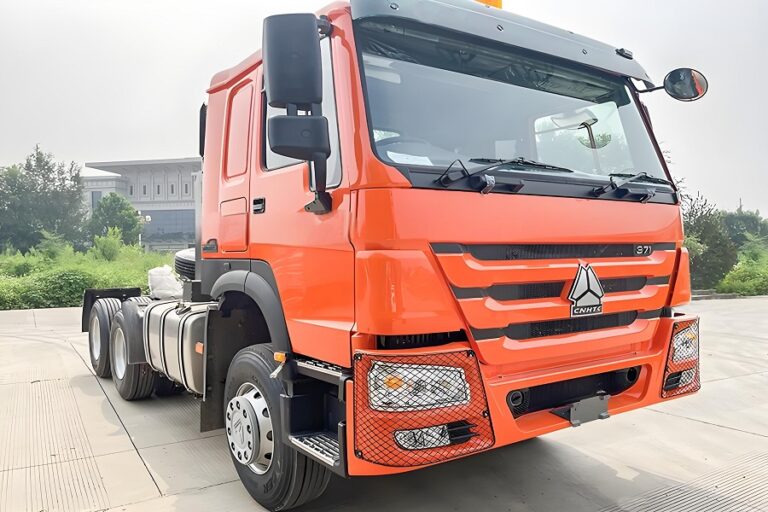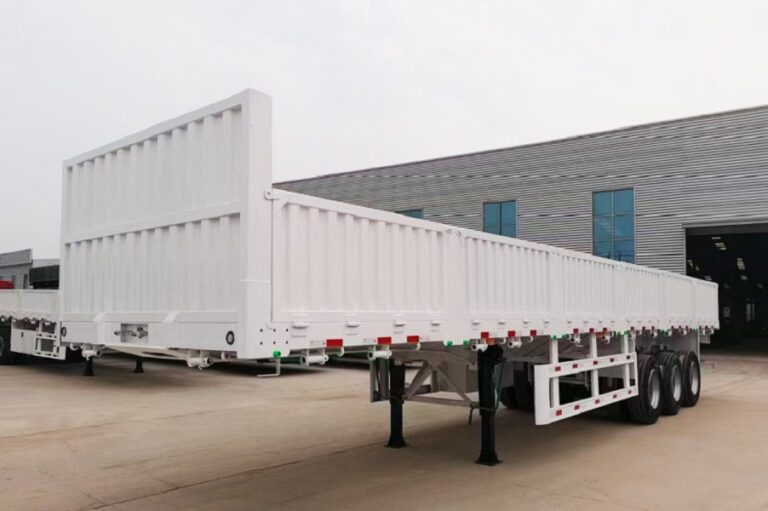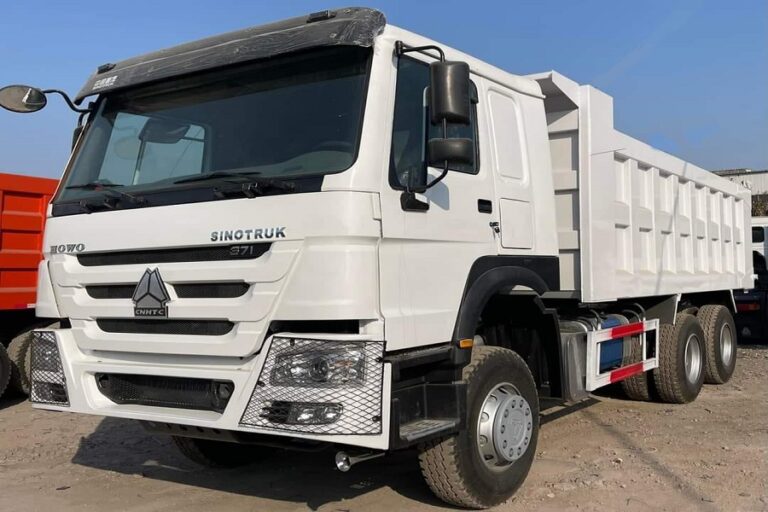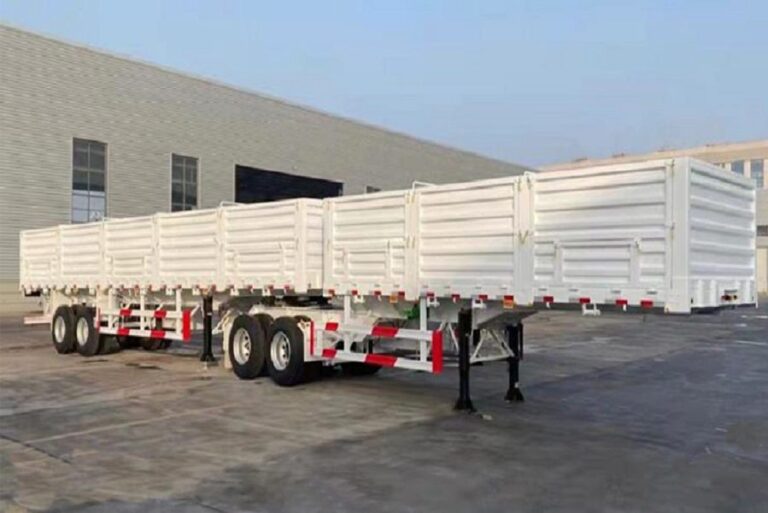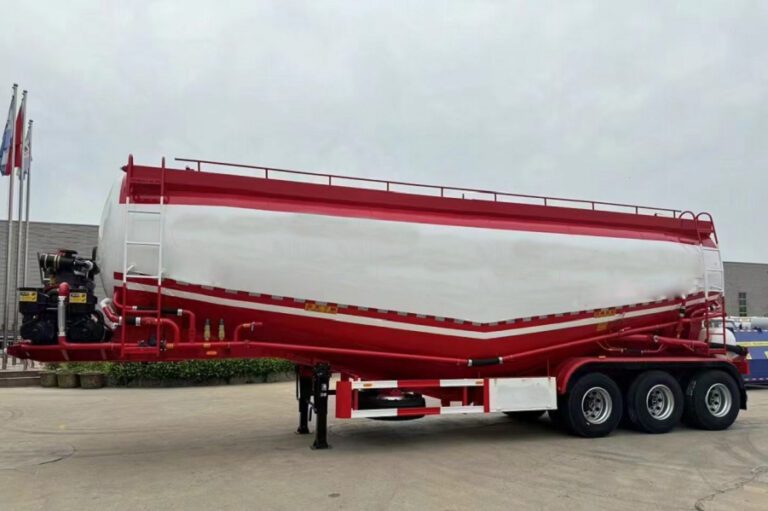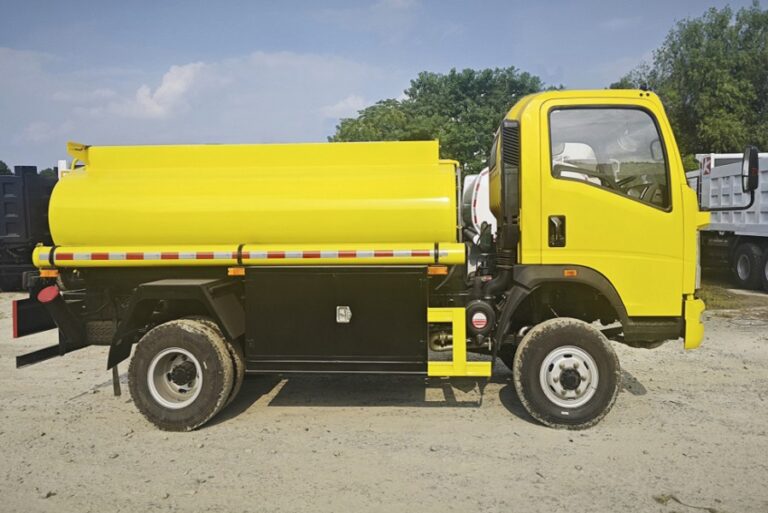Key Words: Flatbed Semi-Trailer, Key Characteristics, Common Uses, Advantages, Safety and Maintenance
A flatbed semi-trailer is a type of trailer widely used in the trucking and transportation industry. Unlike traditional enclosed trailers, flatbeds have a flat, open deck with no sides or roof, offering flexibility for the transportation of various types of cargo. This design allows for easy loading and unloading of goods from all directions, which makes it highly efficient for different industries.
Key Characteristics of Flatbed Semi-Trailers
- Open Design
- The open flat deck is one of the defining features of a flatbed semi-trailer. This design makes it possible to transport large and bulky items that would not fit into traditional enclosed trailers. Items like construction materials, machinery, and oversized equipment can be securely loaded and transported with ease.
- Versatile Loading and Unloading
- Loading flexibility is a significant advantage of flatbed trailers. Cargo can be loaded from the top, sides, or rear, making them especially versatile for different kinds of freight. This feature is invaluable for industries that require quick turnaround times or when dealing with irregularly shaped or heavy items.
- Weight Capacity
- Flatbed trailers generally have a maximum legal weight capacity ranging between 45,000 to 48,000 pounds (about 20,400 to 21,800 kg). However, the specific weight limit depends on factors such as the trailer’s material (aluminum, steel, or a combination), axle configuration, and the weight distribution of the load. It’s important for transportation companies to adhere to local regulations regarding load limits to avoid legal issues.
- Material and Construction
- Flatbed trailers come in different materials, each offering distinct benefits:
- Aluminum Flatbeds: Known for being lightweight, aluminum trailers reduce fuel costs and increase load capacity. They are ideal for lighter loads but come at a higher initial cost.
- Combination (Steel and Aluminum) Flatbeds: These trailers offer a balance of strength and reduced weight. Steel frames provide durability, while aluminum decks help reduce weight.
- Steel Flatbeds: Known for their durability and strength, steel trailers can support heavier loads but are heavier themselves, which can limit their payload capacity.
- Flatbed trailers come in different materials, each offering distinct benefits:
- Customization Options
- Many flatbed trailers are customizable to meet specific transportation needs. Features like removable side rails, coil packages for transporting cylindrical loads, and extendable beds for hauling longer freight are common. Additionally, some trailers come with tarpaulin covers that can be rolled out to provide weather protection when needed.
Common Uses of Flatbed Semi-Trailers
Flatbed trailers are used to transport a wide range of goods across various industries. Their versatility and robust design make them a critical tool in transportation. Here are some of the most common uses:
- Construction Materials
- Flatbed semi-trailers are heavily used in the construction industry to transport large building materials like lumber, steel beams, concrete pipes, and pre-fabricated panels. Their open design allows these materials to be easily loaded and unloaded using cranes or forklifts.
- Heavy Equipment and Machinery
- The heavy equipment and machinery sector relies on flatbed trailers due to their ability to carry oversized loads. Whether it’s construction machinery, agricultural equipment, or industrial machinery, the flatbed design accommodates large, heavy items that need secure transportation. The versatility of flatbeds is particularly useful for loading cranes, excavators, tractors, and bulldozers, all of which often have irregular shapes.
- Bulk Cargo
- Bulk cargo, including agricultural products like grains and fertilizers, is commonly transported using flatbed trailers. This is especially true for goods that require rapid loading and unloading, such as large containers or goods that need to be stacked and secured efficiently. The flatbed’s open design allows for easy access and quick turnaround times at loading docks.
- Vehicles and Automobiles
- Flatbed trailers are also used to transport vehicles such as cars, motorcycles, and buses. The design allows for the use of winches or ramps to load and unload vehicles, making them ideal for car dealerships, auctions, or for transporting vehicles between locations.
- Oversized Loads
- When transporting oversized loads, including wind turbine components, bridge beams, or large cargo containers, flatbed trailers provide the necessary space and flexibility. The open nature of the trailer makes it possible to transport wide or tall items that cannot be accommodated by standard enclosed trailers.
Advantages of Flatbed Semi-Trailers
- Increased Flexibility: The ability to load cargo from various angles provides more operational flexibility than closed trailers. This is particularly useful for large or irregularly shaped loads.
- Cost-Effective Transportation: Due to their simple design, flatbed trailers are often less expensive to purchase and maintain than enclosed trailers. Their lightweight nature also contributes to better fuel efficiency, reducing overall transportation costs.
- Faster Loading and Unloading: The open deck design allows for quicker access to the cargo, reducing time spent at loading docks and enabling more efficient logistics, especially in industries with tight schedules.
- Durability and Strength: Flatbed trailers are designed to carry heavy loads over long distances. Their robust construction ensures that they can endure the rigors of heavy-duty transportation and difficult road conditions.
Safety and Maintenance
While flatbed trailers offer significant operational benefits, they also require careful handling and maintenance:
- Cargo Securement: Proper tie-downs and straps are essential to ensure that the load is secure during transit. Failure to do so can lead to accidents or cargo damage.
- Regular Inspections: Like all trailers, flatbed semi-trailers need to be regularly inspected to ensure their structural integrity and to check for wear on tires, brakes, and other critical components.
- Compliance with Regulations: Transportation companies must ensure that flatbed trailers comply with weight restrictions, load securement regulations, and local road laws. Non-compliance can result in fines or accidents.
Flatbed semi-trailers are a vital tool in the transportation and logistics industries, offering unmatched versatility and capacity for handling a wide variety of cargo types. Their open design, flexible loading options, and heavy-duty capabilities make them indispensable for transporting construction materials, heavy machinery, bulk cargo, and oversized loads. Whether for short-distance hauls or long-haul transportation, flatbed trailers continue to play a pivotal role in efficiency and cost-effectiveness within the freight industry.
For more information or to learn about our services, please feel free to contact us. We are here to assist you with all your needs.You can also click here to know more about our products.
- Cement Tanker Trailer1 product
- Drop Side Semi Trailer3 products
- Flatbed Trailer2 products
- Fuel Tanker Trailer1 product
- HOWO Dump Truck1 product
- HOWO Fuel Tank Truck1 product
- HOWO Tractor Head1 product
- Low Bed Trailer2 products
- LPG Tank Trailer1 product
- Skeletal Trailer1 product
- Superlink Trailer2 products
- Tipper Trailer1 product
- Used Pickup Truck4 products

